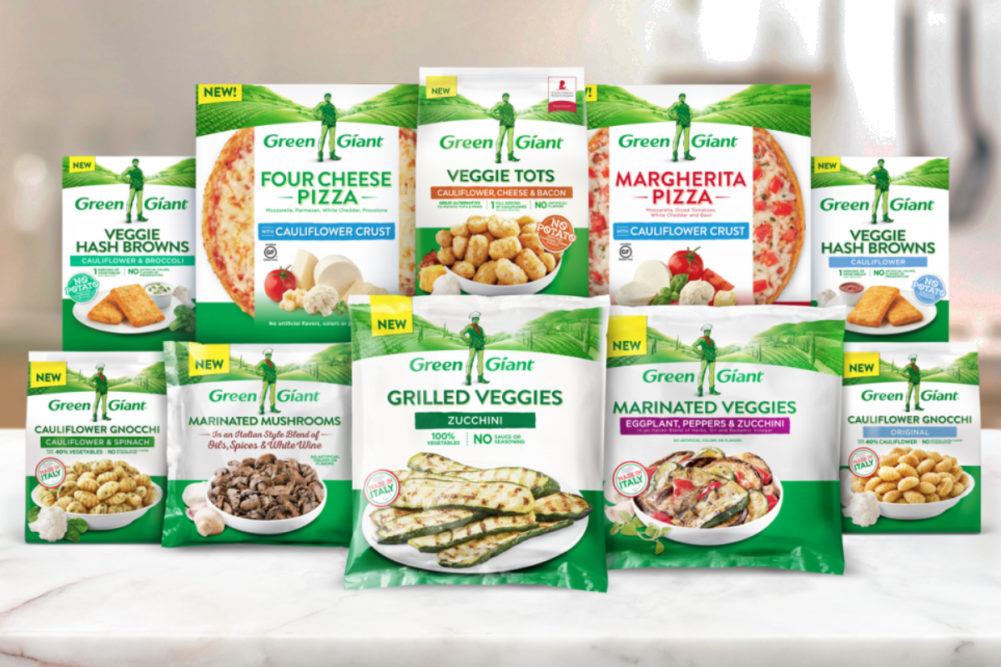PARSIPPANY, NJ. — While B&G Foods’ sales rose 12% during its first quarter of fiscal 2021, the company’s net income remained flat when compared to the first quarter of fiscal 2020. Hindering earnings were several factors, including supply chain difficulties for its Green Giant business and rising commodity costs. Management sees commodity inflation lasting throughout the year.
“The first quarter has largely played out as expected, with low to mid-single-digit inflation on a blended basis across our basket of goods with significant increases in agricultural products and commodity-related input costs as well as corrugate, steel and aluminum,” said Bruce C. Wacha, chief financial officer, during a May 11 conference call with market analysts. “We are also seeing meaningful increases in freight costs and COVID-19-related customer fines.”
The company has locked in many of its commodity costs for the first three quarters of the year and is seeking cost reduction opportunities. Raising prices on some products also is occurring, Mr. Wacha said.
Net income for the quarter ended April 3 was $27 million, equal to 42¢ per share on the common stock, and down slightly from the year prior when net income was $28 million, equal to 44¢ per share.
Sales for the quarter were $505 million, up from $449 million the year before.
The company’s spices and seasonings portfolio contributed to the sales increase as more people cooked at home, Mr. Wacha said. The foodservice side of the business also saw an uptick in sales. Other brands contributing to the sales growth included Las Palmas, Maple Grove Farms and Ortega.
Supply chain constraints hindered B&G Foods’ Green Giant business. Sales fell 16% to $133 million during the quarter.
“Green Giant as well as its competitor brands will have supply constraints until we reach the new pack season later this year,” Mr. Wacha said. “As a result, we were forced to make tough decisions and placed the brand on allocation with our customers, which will limit sales of Green Giant products until this year's third quarter so that we don't sell out before the pack season.”
David L. Wenner, interim president and chief executive officer, said B&G Foods’ household penetration has grown substantially during the past 12 months, up almost 10%.
“Our job is to retain these new and revitalized consumers as the pandemic eases,” he said. “We believe the potential to do that exists primarily because work-from-home is here to stay in one form or another.”
Despite the challenges posed by rising costs, the company reaffirmed its sales guidance of $2.05 billion to $2.10 billion for the year. The Crisco brand, which was acquired from the J.M. Smucker Co. in December, is expected to support the sales growth.
Mr. Wenner said he expects rising costs to be a “significant issue” that will not be resolved anytime soon. He added that while the company has locked in many of its positions, “… the wildcard really is how much are things going to continue to ramp up, and what’s going to happen when those positions run out?”
He said he expects freight to level off, but sees commodity inflation remaining a factor for some time.
“My personal opinion on the agricultural commodity side is that this is more than a one-year phenomenon, that this crop is not going to fix the problem even if it’s a good crop, and that we will see elevated costs going into 2022,” he said.
In response to an analyst’s question, Mr. Wenner added, “if you look at the history of things like soy and corn oil, and things like that, this kind of thing happens every 8, 10 years. And it takes a year or two of good crops to shake it out back to normalized levels. There is a long-term normalized level of pricing in the market for these kinds of commodities. Shortages drive those up, and it may drive it up for more than one year.”





